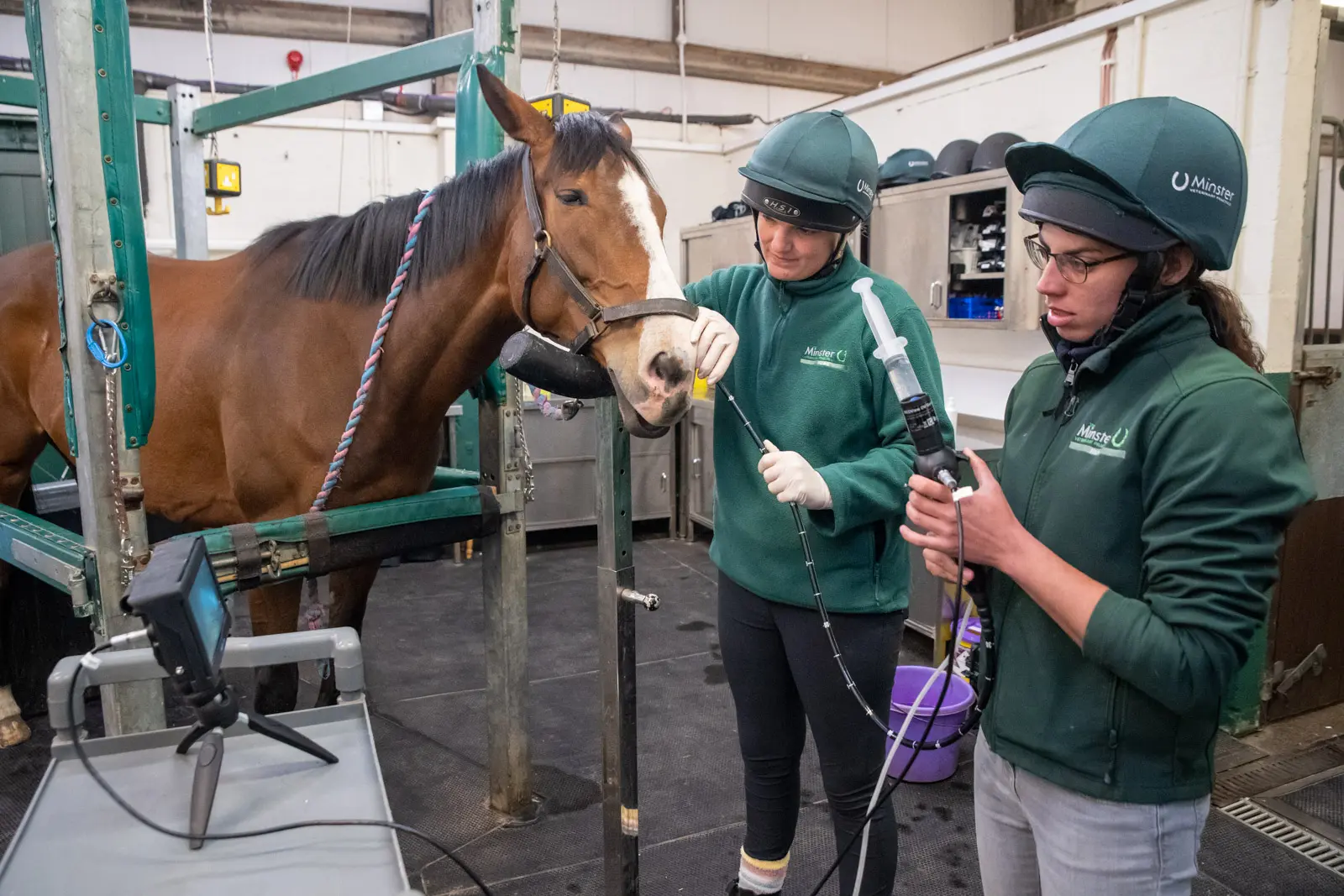Gastroscopy
What is a Gastroscopy?
A gastroscopy can provide a definitive answer as to whether your horse is suffering from gastric ulcers. It allows us to visualise the lining of the stomach by passing a 3m long endoscope through the nasal passage into the back of the throat, where it is then swallowed into the oesophagus. The endoscope is then passed down the oesophagus to the stomach. The horse is sedated for this procedure, and it should take approximately 15 minutes to carry out.
We hold regular gastroscopy clinics every month at our Poppleton practice. Gastroscopies are carried out at a significantly reduced price of £175.00, including sedation, and the offer includes horses that have previously been scoped for ulcers.
A gastroscopy can provide a definitive answer as to whether your horse is suffering from gastric ulcers. It allows us to visualise the lining of the stomach by passing a 3m long endoscope through the nasal passage into the back of the throat, where it is then swallowed into the oesophagus. The endoscope is then passed down the oesophagus to the stomach. The horse is sedated for this procedure, and it should take approximately 15 minutes to carry out.
We hold regular gastroscopy clinics every month at our Poppleton practice. Gastroscopies are carried out at a significantly reduced price of £175.00, including sedation, and the offer includes horses that have previously been scoped for ulcers.
What are Gastric Ulcers?
Gastric ulcers are caused by prolonged exposure to acid in the stomach, leading to erosion of the stomach lining. Ulcers can appear in two areas; the glandular mucosa and the squamous mucosa.
The glandular mucosa is naturally in contact with the acid, and ulcers here can indicate a reduced ability of this tissue to protect itself. The squamous mucosa is the non-glandular tissue that should not normally be in contact with the stomach acid.
Ulcers here can be caused by forage deprivation, exercise on an empty stomach, high work intensities and diets high in concentrates.
How do I know if my horse has Gastric Ulcers?
Symptoms include:
- Poor condition
- Reluctance to eat
- Discomfort when girthing or grooming
- Weight loss
- Recurrent or acute colic
- Poor performance
- Changes in attitude and behaviour
Some horses show few or very subtle symptoms. If your horse is showing any of these symptoms, please contact the clinic.
What is the procedure prior to the gastroscopy?
To visualise the mucosa, the stomach must be empty. Therefore, the horse must be starved overnight in order for them to be ready for their procedure in the morning.
It is possible to do gastroscopies on the yard if necessary but ideally your horse will be admitted to the clinic the day before the procedure. We advise that the gastroscopy is booked for the morning; this allows you to take the food out after the horse’s evening feed.
If you are starving your horse yourself, you should ensure that they do not have access to any food for 12 hours prior to the procedure. Ideally the horse should be on inedible bedding, and it is advised that they are muzzled if they are likely to eat any bedding or faeces. The water should be taken out one hour before the procedure.
If the horse is not starved correctly then it is more difficult to give an accurate diagnosis.
What happens after the gastroscopy?
After the procedure, your horse needs to wake up from the sedation; this can take up to an hour. Once awake, your horse can be fed and have water back in the stable. We suggest a wet feed or small amount of wet forage to start with. Once they have eaten, the horse can then travel home.
What happens next?
If your horse does have gastric ulcers then a treatment plan will be devised, including medication, diet and management changes. After treatment, it is advised that your horse has a repeat gastroscopy to see if the condition has improved.


